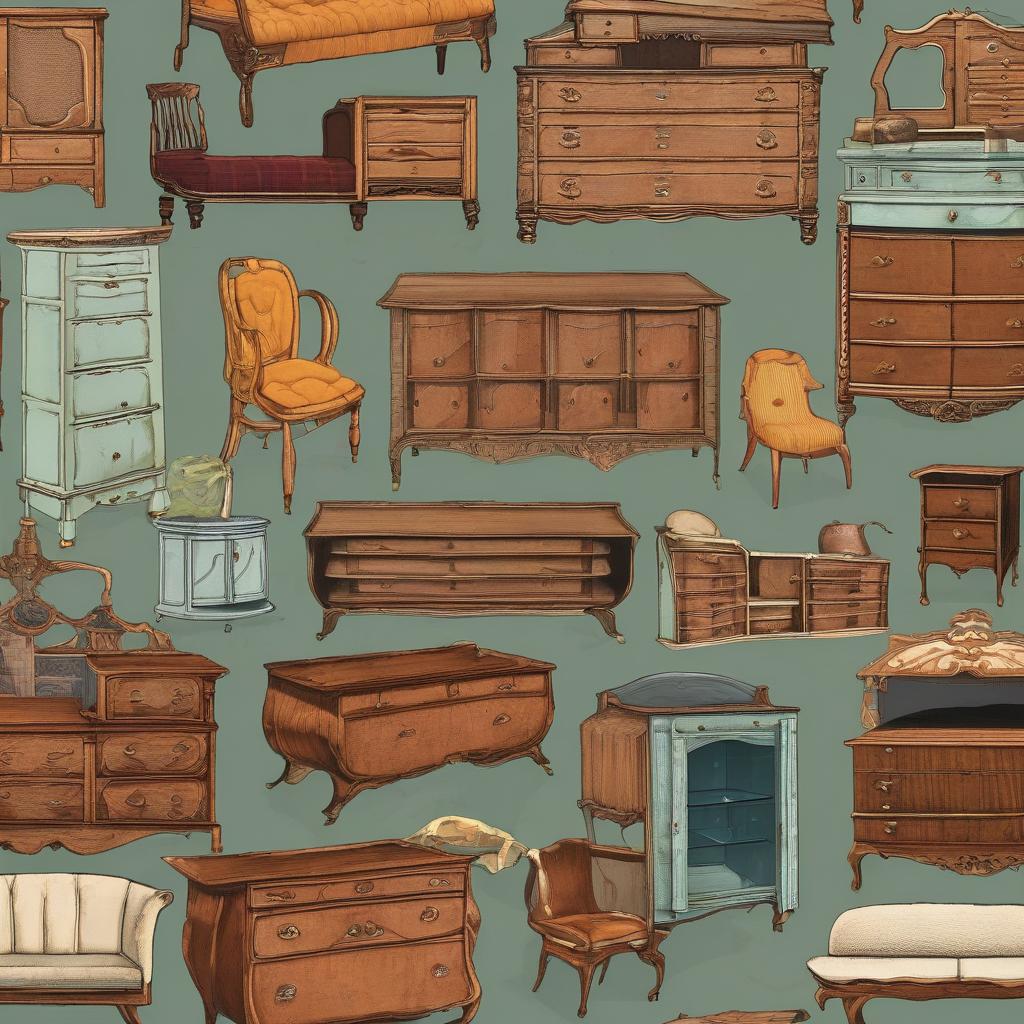Are you a lover of vintage charm and sustainable living? Do you enjoy breathing new life into old, forgotten pieces of furniture? If so, embarking on a journey into the world of secondhand furniture restoration might just be your next passion project. In this guide, we’ll delve into the step-by-step process of refurbishing and selling secondhand furniture while emphasizing sustainability and creativity. Get ready to unleash your inner artist and transform worn-out pieces into beautiful treasures that add character and style to any space.
Embracing the Secondhand Furniture Movement
Understanding the Appeal
Secondhand furniture restoration is more than just a hobby; it’s a movement towards sustainable living and conscious consumption. In a world plagued by fast furniture and disposable décor, there’s a growing appreciation for the timeless beauty and quality craftsmanship of vintage and antique furniture. By rescuing and refurbishing secondhand pieces, you not only reduce waste and environmental impact but also preserve history and craftsmanship for future generations to enjoy. Plus, there’s something uniquely satisfying about the process of transforming a neglected piece into a cherished heirloom.
Exploring the Possibilities
The world of secondhand furniture restoration is vast and varied, offering endless opportunities for creativity and self-expression. From vintage dressers and mid-century modern chairs to rustic farmhouse tables and retro sideboards, there’s a wealth of furniture styles and eras waiting to be rediscovered and revived. Whether you’re drawn to the challenge of repairing damaged pieces, the thrill of uncovering hidden treasures at flea markets and thrift stores, or the joy of experimenting with paint and upholstery, there’s something for everyone in the world of secondhand furniture restoration.
Getting Started
Scout for Treasure
The first step in your secondhand furniture restoration journey is to scout for treasure in unlikely places. Explore flea markets, thrift stores, garage sales, and online marketplaces to hunt for secondhand furniture pieces with potential. Keep an open mind and a keen eye for quality craftsmanship, unique details, and interesting shapes and silhouettes. Don’t be deterred by superficial flaws or minor imperfections; many pieces can be easily repaired or refreshed with a little creativity and elbow grease. Trust your instincts and follow your intuition when selecting pieces to refurbish and restore.
Assess and Select
Once you’ve amassed a collection of secondhand furniture pieces, it’s time to assess their condition and select your projects wisely. Take a close look at each piece to identify any structural damage, missing parts, or major repairs needed. Consider factors such as wood type, construction quality, and design aesthetics when evaluating each piece’s potential for restoration. Choose pieces that align with your skill level, interests, and artistic vision, and that have the greatest potential for transformation. Keep in mind that some pieces may require more extensive repairs or refinishing than others, so be prepared to invest time and effort accordingly.
Gather Your Tools and Supplies
Before diving into your restoration projects, gather the tools and supplies you’ll need to get the job done. Invest in quality tools such as sanders, saws, drills, and screwdrivers to tackle a variety of repair and refurbishment tasks. Stock up on sandpaper, wood filler, glue, and finishing products to restore and refinish wood furniture surfaces. Explore upholstery fabrics, foam padding, and upholstery tools if you plan to reupholster chairs, sofas, or benches. Don’t forget safety gear such as goggles, gloves, and dust masks to protect yourself during the restoration process. Having the right tools and supplies on hand will help you tackle any restoration challenge with confidence and ease.
Restoration Techniques
Repair and Restore
The first step in the restoration process is to repair any structural damage and restore the integrity of the furniture piece. Assess the extent of damage and prioritize repairs based on safety and stability concerns. Use wood glue, clamps, and wood screws to reinforce joints, mend cracks, and replace missing or damaged parts. Fill in gaps, holes, and dents with wood filler and sand the surface smooth once dry. Consider techniques such as wood carving, woodturning, and marquetry to recreate missing or damaged decorative elements. Take your time and pay attention to detail to ensure that your repairs are seamless and sturdy.
Refinish and Revive
Once the structural repairs are complete, it’s time to refinish and revive the surface of the furniture piece. Sand the entire surface to remove old finish, paint, or stain and reveal the natural beauty of the wood underneath. Start with coarse-grit sandpaper to remove imperfections and work your way up to finer grits for a smooth, polished finish. Choose a stain or paint color that complements the style and era of the furniture piece, or opt for a clear finish to highlight the natural wood grain. Apply multiple coats of finish, allowing each coat to dry completely before sanding and applying the next. Finish with a protective topcoat to seal and protect the surface from wear and tear.
Reupholster and Renew
If your furniture piece features upholstery, consider reupholstering it to give it a fresh new look and feel. Remove the old upholstery fabric, padding, and any damaged or worn-out components. Inspect the frame and springs for damage and repair or replace as needed. Choose a durable, high-quality upholstery fabric in a color or pattern that complements the furniture piece and your design aesthetic. Cut the fabric to size and staple or tack it securely to the frame, stretching it taut to avoid wrinkles or sagging. Add new foam padding or batting for comfort and support, and finish with decorative trim or upholstery nails for a polished look.
Showcasing and Selling
Stage and Style
Once your restoration projects are complete, it’s time to showcase them in their best light and attract potential buyers. Stage your furniture pieces in a well-lit, visually appealing setting that highlights their beauty and craftsmanship. Arrange them in vignettes or room settings that showcase their functionality and versatility. Add accessories such as throw pillows, blankets, and decorative accents to enhance their appeal and create a cohesive look. Take high-quality photos from multiple angles to capture the details and features of each piece, and use them to create compelling listings for


